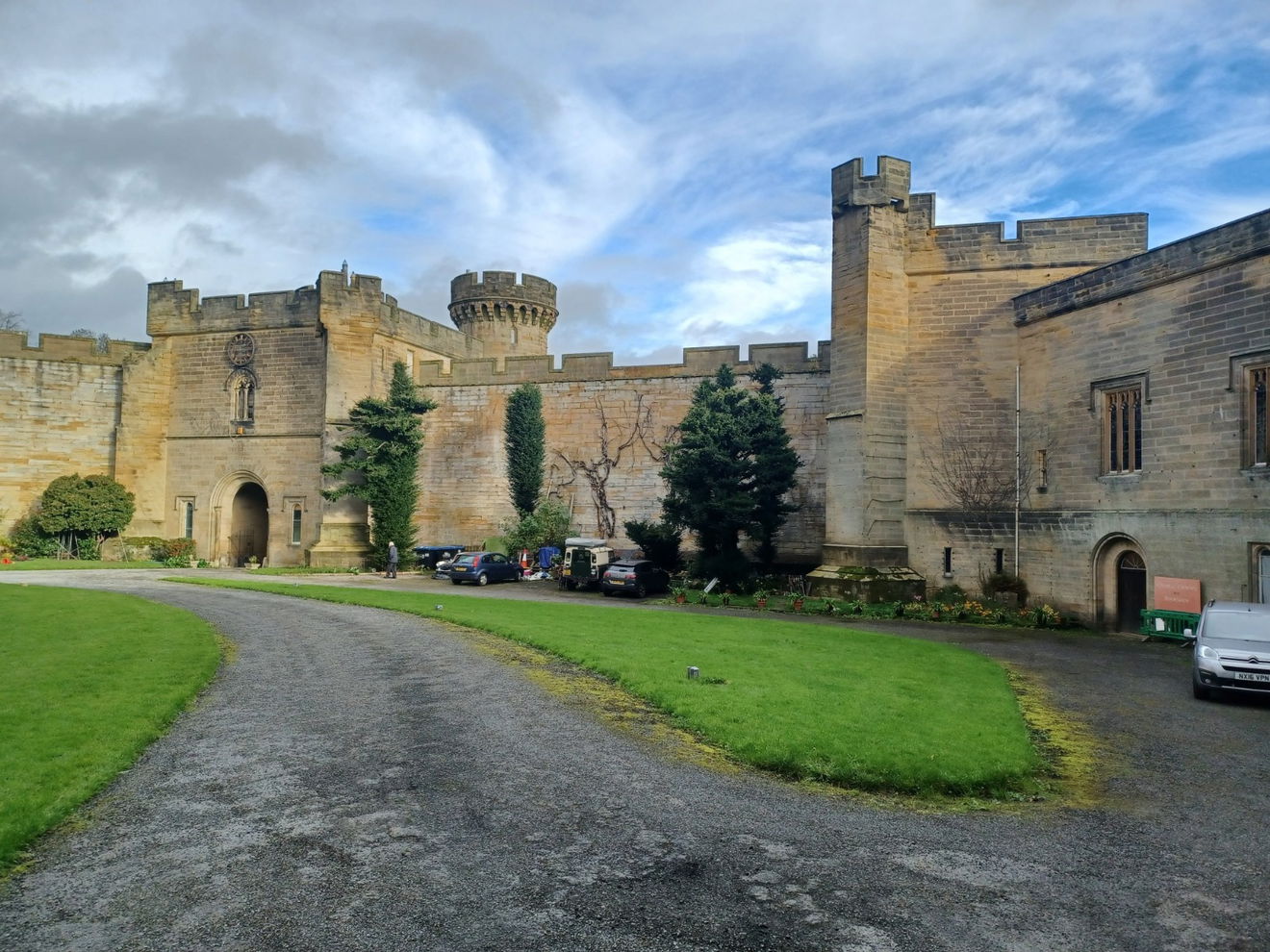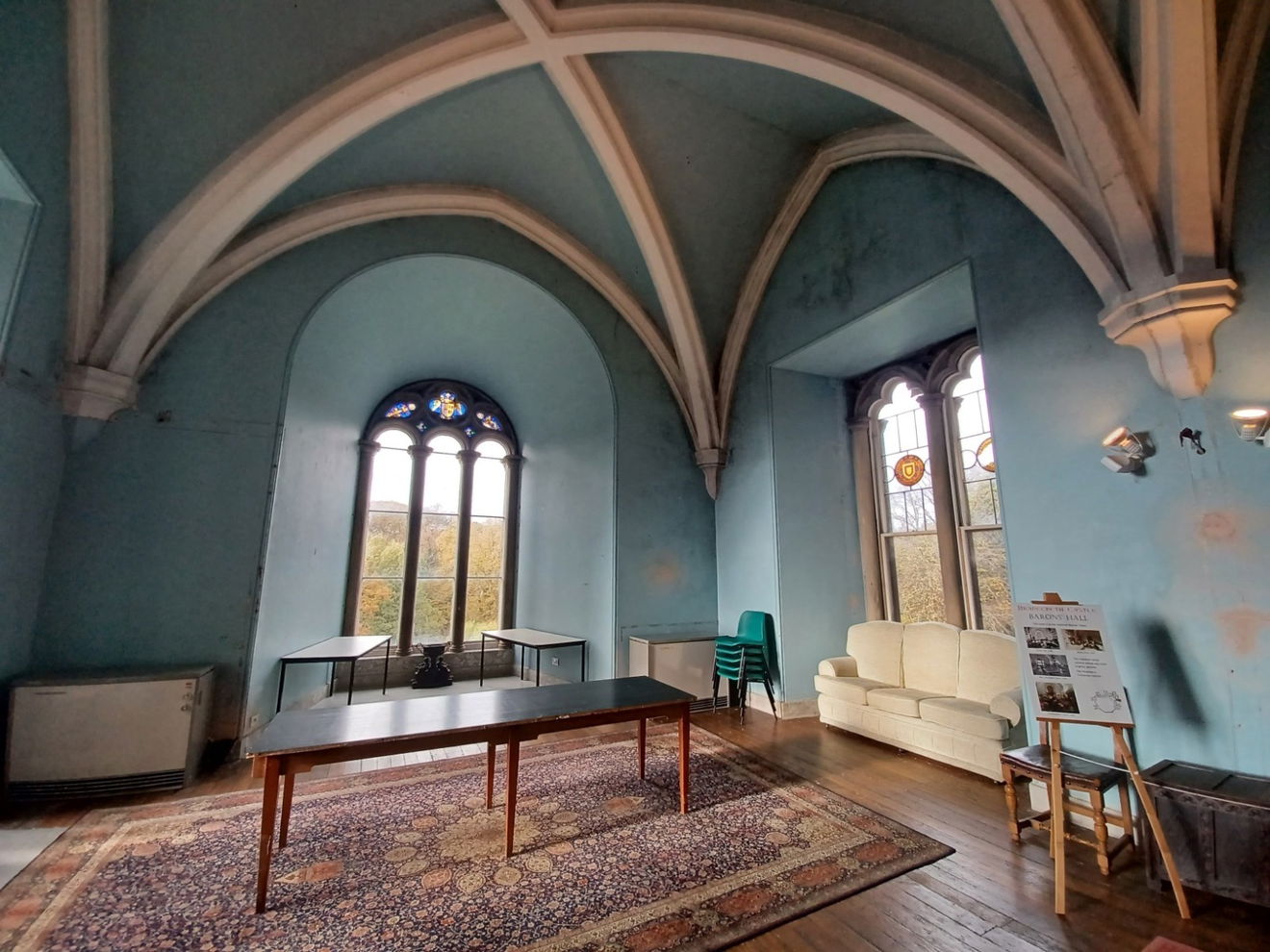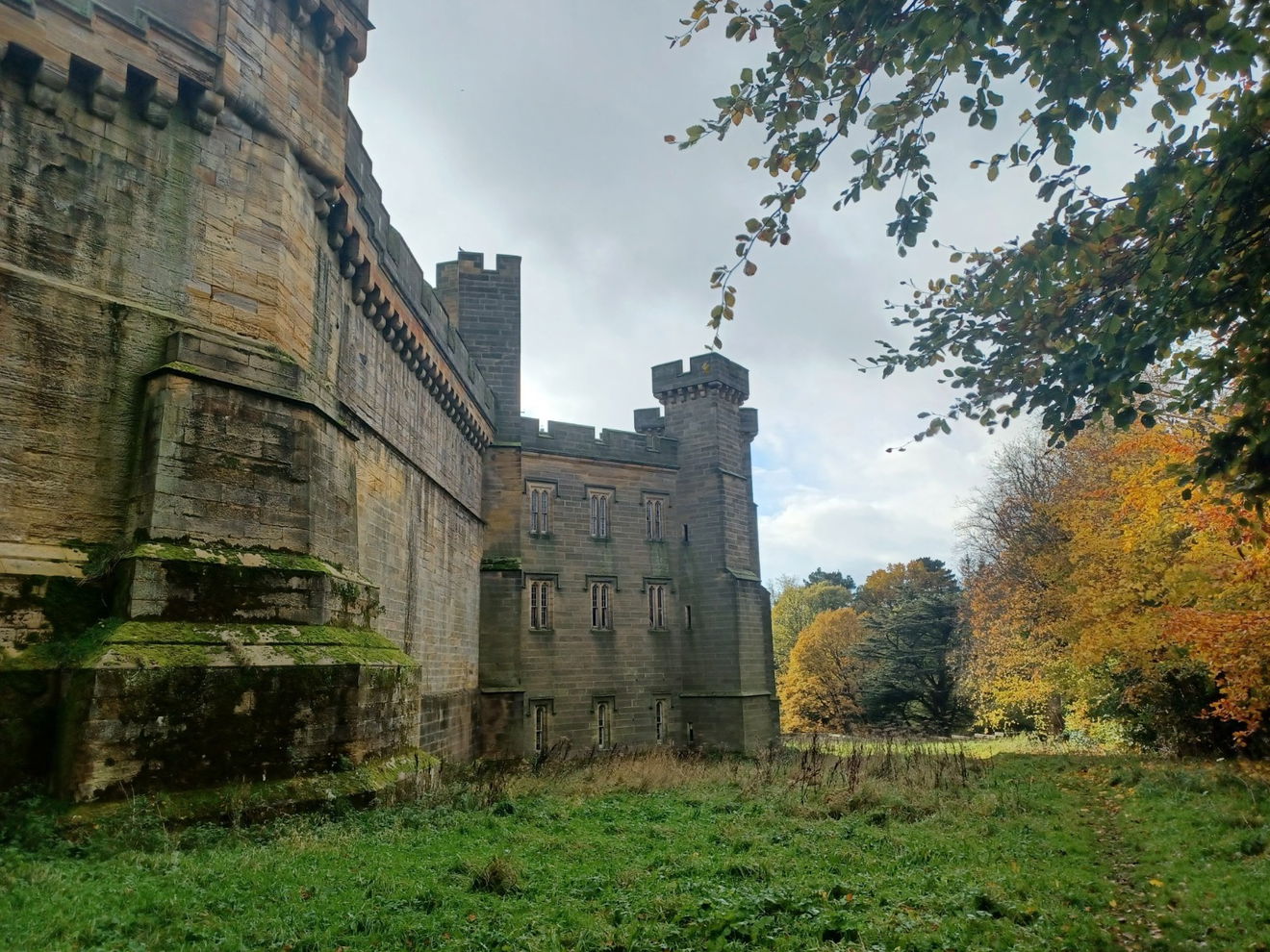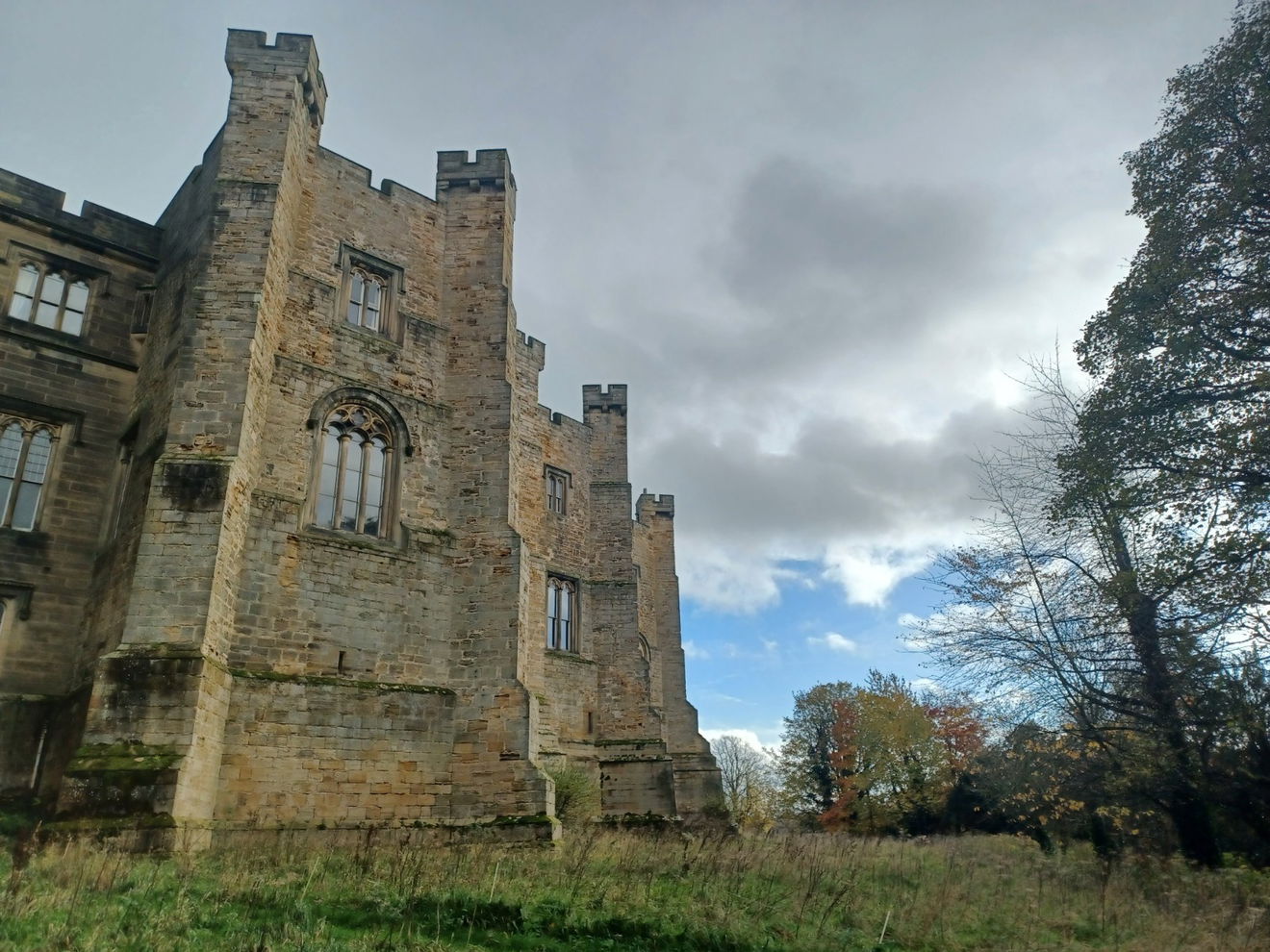Brancepeth Castle
Castle In Durham, County Durham
Impressive castle owned by the Neville family until the 16th century.

Brancepeth Castle has been on my to do list for a long time, but the castle is only open on certain days due to it being a family home. I was lucky that my latest holiday from work meant that I could book on to a guided tour, which was obviously very exciting. The castle also has two craft fairs during the year in July and November, so you can also drop in on those dates. There is plenty more information about guided tours on their website at Brancepeth Castle. I arrived at 10am on 9th November and our tour lasted just over an hour with Oliver as our guide.
The earliest version of Brancepeth Castle was built in the 12th century by the Bulmer family. (You may know of later generations of the Bulmer family if you're a cider drinker - Bulmers Cider was founded by Henry Percival Bulmer in 1887). This early wooden castle stood as a testament to the Norman's dominion over the region, serving as a defensive castle and a symbol of power.


In the late 13th century, the castle passed into the hands of the Neville family. The Nevilles embarked on a significant expansion of the castle, transforming it into a stone-built fortress that reflected their growing influence and status. You've probably heard of the Neville family too particularly if you live in County Durham - they were rivals of the Northumberland family the Percys.
The castle's association with the Neville family would also lead to its downfall, however. In 1569, the Nevilles' involvement in the Rising of the North, a rebellion against Queen Elizabeth I, resulted in the confiscation of Brancepeth Castle by the Crown. This turbulent period marked a turning point in the castle's history, as it passed through various hands until the late 18th century.


In 1796, the castle was acquired by William Russell, a wealthy Sunderland banker whose family were known as one of the 'Grand Allies'. The Russells, keen to modernize the castle and adapt it to the changing lifestyles of the 19th century, embarked on a comprehensive reconstruction project. Under the direction of renowned architects John Paterson and Anthony Salvin, the castle underwent significant alterations, transforming its medieval fortifications into a grand Regency residence. You can see where work on the building took place. The new owner wanted the masonry to be completely different to the older stones, and this can be seen in the newer stones which have diagonal lines running across them. Each one of these blocks was individually dressed by hand and must have taken thousands of hours to complete.
The Russells' renovations not only enhanced the castle's aesthetic appeal but also introduced modern conveniences. The castle became a hub for social gatherings and cultural events, attracting prominent figures from the region and beyond.
The 20th century brought further changes to Brancepeth Castle. During World War I, the castle served as a hospital for patients from Newcastle General Hospital, providing much-needed care to those wounded in the conflict. In the aftermath of the war, the castle became a focal point for the Durham Light Infantry during World War II, with the regiment establishing a military camp in the surrounding village. The castle was also used temporarily by pyrex makers James A Jobling or JAJ and you can still see their logo on one of the castle's glass doors.



The interior of the castle is pretty spectacular. I felt lucky to be able to have a mooch around the family home and see a number of very grand rooms. Our guide did allude to the possibility of there being ghosts that haunted the castle, but I thought each room had a lovely welcoming feel and despite the rooms being large, it had a very cosy feel to it. Some of the stand out rooms include the Constable Tower, with it's beautiful light and high vaulted ceilings and the Entrance Hall which also doubled up as a ballroom as it has a sprung floor with specially crafted joints in the oak panels. Another feature that really stood out was the magnificent Frosterley Marble fireplace in the Baron's Hall. I might have mentioned before how amazing Frosterley Marble is. You can spot it at Auckland Castle and Durham Cathedral as well as in the village of Frosterley itself.
The cellar was another intriguing part of the castle - it is the most unchanged part of the castle and would have looked much the same in medieval times. English Heritage have recently described the castle as being in the top 2% of important medieval castles in the country. In contrast, the architectural historian Nikolaus Pevsner dismissed the castle as a mere folly. Who's laughing now?



Today, the castle remains a family home to the Dobson family and my lovely guide was Oliver Dobson. His family bought the castle in 1978 and Oliver's father was publisher Dennis Dobson. You may have heard of some of the authors he published which include Isaac Asimov, Ivor Cutler and Spike Milligan to name a few. Some of the books he published are available to buy in the castle shop, along with lots of other treats including bags, postcards and castle guides. There is also a cafe on site and I have heard rumours that their cakes are delicious. If you're in the area, it's also worth visiting St Brandon's Church nearby, which equally has a fascinating history.



Get 5 points if you have visited this place. Already visited by 98 VIPs.
Login to the VIP area to add places to your bucket list, mark them as visited and more importantly see where you rank on the league table.
How To Find Brancepeth Castle
Where Is Brancepeth Castle?
Lat / Long
54.734436, -1.654919
What three words
Where To Park For Brancepeth Castle?
Lat / Long
54.734678, -1.653471
What three words
There is space in front of the entrance to the castle for parking.
Contributed by Sandra Clemens
I love the great outdoors and have been a National Trust & English Heritage member for years. I also love going off the beaten track and finding places like Sharp's Folly or Rothley Castle which are hidden gems in Northumberland. My favourite recent hike was climbing Red Screes in the Lake District on a whim, not fully grasping how high 776m was. It was still an achievement to conquer a Wainwright walk and I hope to do more one day.
More Places from Sandra
More Places In Durham
Find more fabulous places in Durham, County Durham and if you know of a place we haven't listed, then let us know.

Kingsgate Footbridge
Bridge Durham County DurhamModernist footbridge completed without using scaffolding in 1963

Pit House Plantation Trig Point
Trig Point Durham County DurhamThis is the trig point for Pit House Plantation (266m) near Durham.

Oriental Museum
Museum Durham County DurhamA museum containing collections from cultures and histories of northern Africa to Asia including more than 30,000 objects of art, textiles, ceramics, and manuscripts.
More Castles
So this castle wasn't enough and you want more? Don't worry we have you covered.

Lumley Castle
Castle Chester-le-Street County DurhamA grade I listed castle built in 1392, now a stunning hotel.

Halton Motte and Bailey Castle
Castle Lancaster LancashireA Motte and Bailey Castle thought to date from the 11th century.

Rothley Castle
Castle Morpeth NorthumberlandA grade II listed, 18th century gothic folly, built for the Wallington Hall estate.
Never Miss A Fabulous Place
If you are afraid of missing out on all the fabulous places we post, or just want to be the first to know, then sign up to the Fabulous North.
Each week we will email you all the brand new places that we visit.
Sign Up To AlertsFind Us On Facebook
We post all our new places daily on our Facebook Groups page, so join the group today and be notified when we add a new place.
Join Our Facebook GroupBrancepeth Castle was listed in Castle // County Durham // Durham


